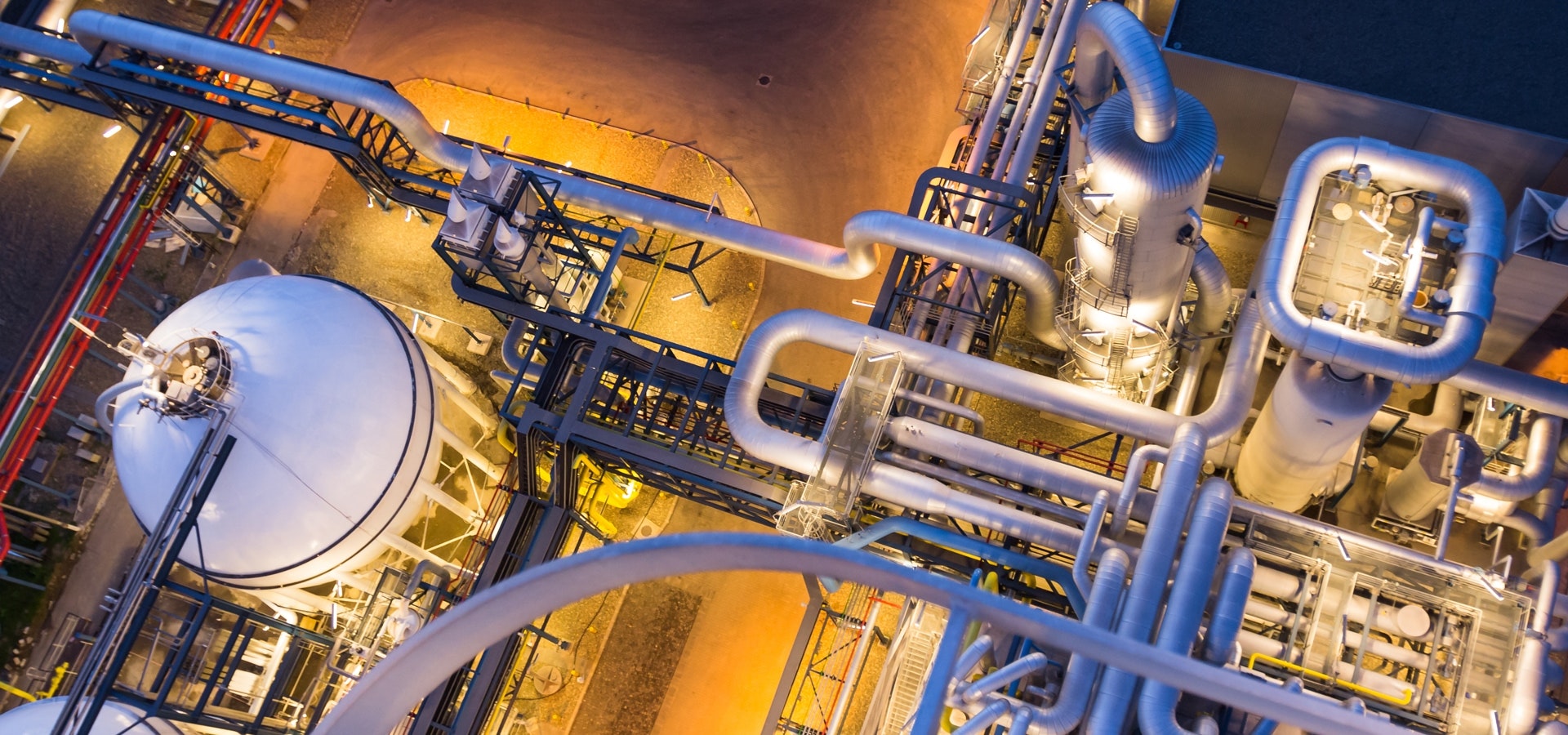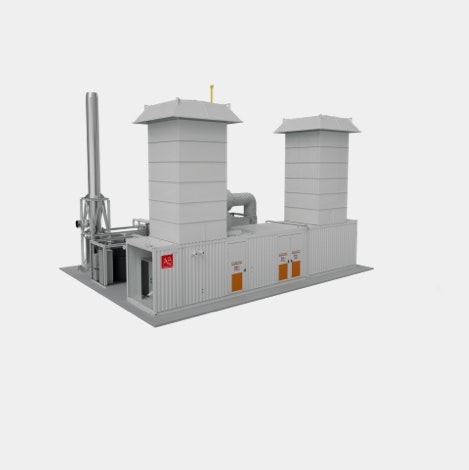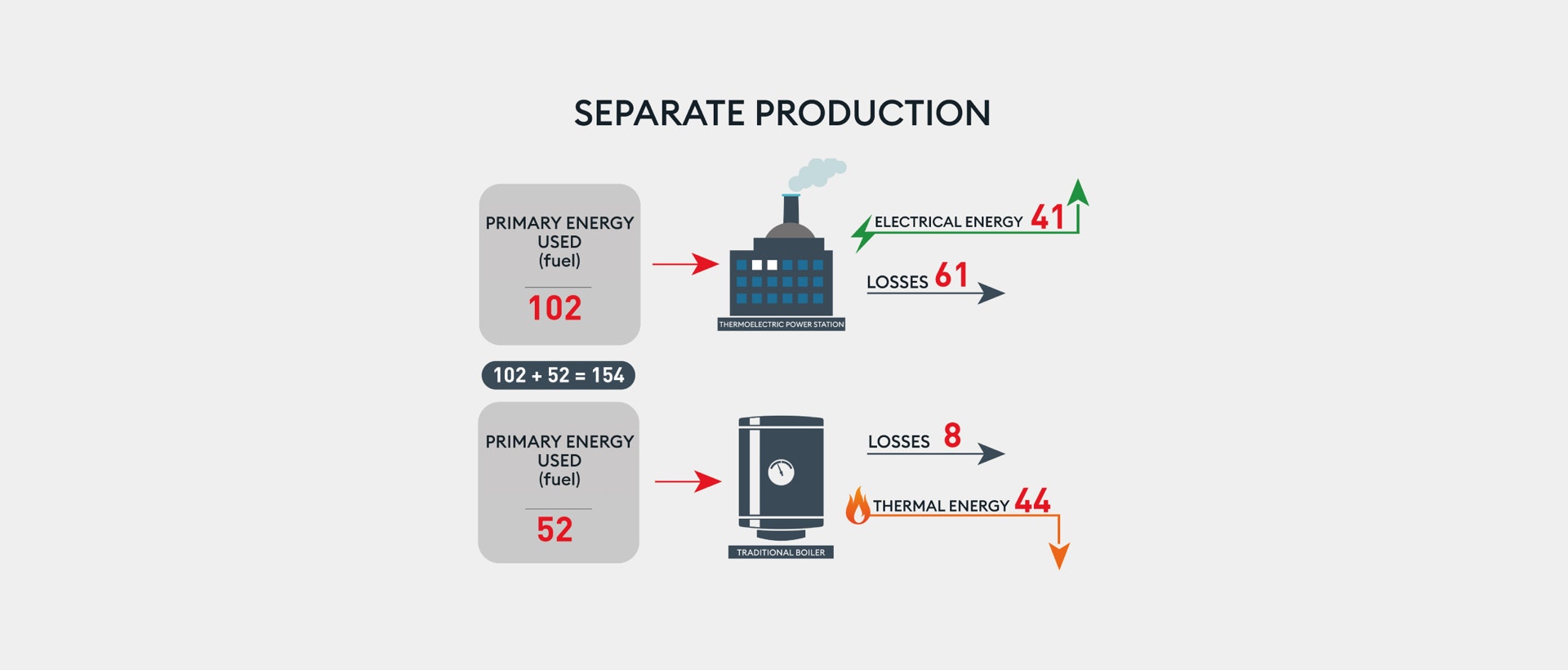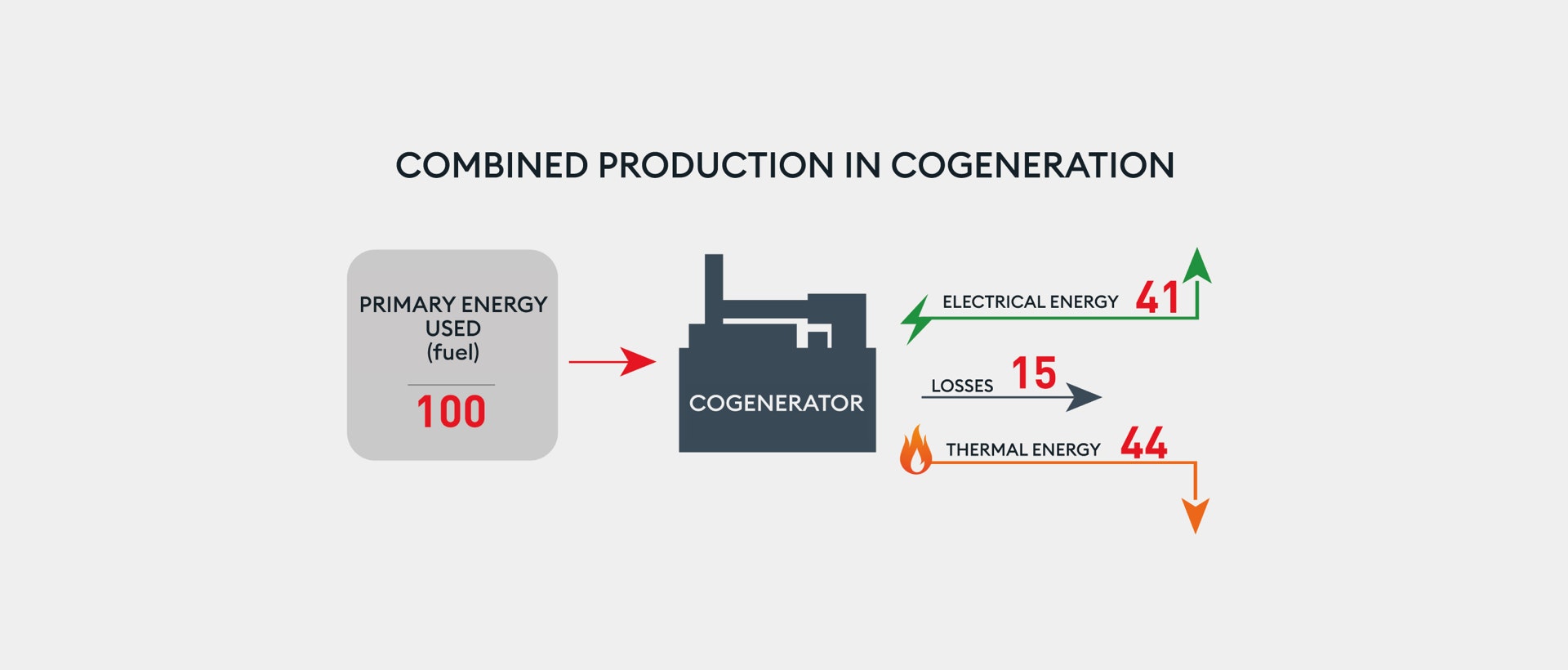
Natural gas cogeneration
- Home
- Natural gas cogeneration
The ideal solution for the efficiency of energy-intensive structures.
Suitable for many industrial, tertiary and service sectors, cogeneration responds effectively to the needs of energy-intensive realities, characterized by high consumption of heat and electricity.
In fact, a cogeneration plant simultaneously produces electricity and thermal energy from a single energy source inside an integrated system. This is why we use the phrase combined heat and power.
Therefore, using the same fuel (natural gas) to generate two energy carriers (electricity and heat) makes it possible to increase the effective use of the source fuel up to 85%, with the resulting reduction in energy costs and CO₂ emissions, compared to the separate production of electricity and heat.
The use of the heat generated during the process, which would otherwise be lost, allows cogeneration to obtain the highest levels of energy efficiency and performance, with the advantage of being able to manage energy production continuously, reliably and safely.
Products
How a cogenerator works
A cogeneration plant consists of an Otto cycle engine, powered, in this case, by natural gas, which produces mechanical energy that is conveyed through an alternator to generate low voltage electricity, which is then transformed into medium voltage electricity.
Heat recovery takes place on two fronts:
from the engine cooling water, using a plate-type heat exchanger that allows obtaining high-temperature water;
from the flue gas fumes, which, being close to 400°, can be used to produce hot water, superheated water, steam or diathermic oil through a boiler, or be used pure in the process.
Energy produced
Electric power
to be sold to the network
Thermal energy
for the production of:
hot water
superheated water
steam
diathermic oil
cold water (CCHP)
Technologies and operating process of a cogenerator
Sectors of application
Airports
Ceramic and brickwork industry
Chemical and pharmaceutical industry
Data processing centers
Engineering companies
Food & Beverage Industry
Greenhouse
Hospitals
Hotels
Paper mills
Plastic industry
Textile industry
Shopping centers
Universities



